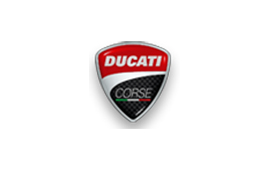october 26, 2017 - Brembo
The scorching temperatures at Sepang put cooling at risk, but if it rains, keep an eye on the carbon discs
The #motogp bikes brake twice as much as Formula 1 cars at the Malaysian GP
For the fourth year in a row, the 17th and second to last race in the #motogp World Championship will be held at Sepang International Circuit. The #malaysiangp is scheduled for October 27-29 on the circuit designed by Hermann Tilke, which was inaugurated in March 1999.
Located 85 km from Kuala Lumpur on a 260-hectare oil palm plantation, this is the second longest track in the World Championship after Silverstone and one of the most difficult for the #motogp braking systems. Formula 1 also races here, but the brakes on the single-seaters are under less stress compared to the motorcycles.
There are lots of braking sections for the #motogp bikes, and the time spent braking is significant. This combined with the tropical weather make managing the temperatures of both the brakes and the riders crucial. During a race in 2015, the air temperature reached 35°C and the tarmac hit 47°C.
Last year, the rain played a key role in FP2, FP4, Q1, Q2 and even during the race: Several riders tested the #brembo carbon discs to eliminate the problem of weather variations and intermittent rain. That experimentation proved decisive for Marc Marquez's victory this year at Misano Adriatico, where he used carbon discs to compete in the rain.
According to #brembo technicians, who assist 100% of the 2017 #motogp pilots, Sepang International Circuit is very demanding on the brakes. On a scale of 1 to 5, it earned a 5 on the difficulty index, the same score given to Motegi, Spielberg and Barcelona.
The demand on the brakes during the GP
On Sepang International Circuit the Formula 1 cars use their brakes eight times per lap for a total of 17 seconds, while the #motogp bikes have to use them 11 times for more than twice the time, 35 seconds. That means the brakes on the motorcycles are in use for 29% of the race and those of the single-seaters for only 17%.
The average peak deceleration per lap of the #motogp bikes is 1,07 G due to there being five braking points that measure less than 1 G. Summing up all of the force applied by a rider on the brake lever from the starting line to the checkered flag, the result comes in at about 1 ton. In other words, the riders are required to apply a force of more than 24 kg on the brake pedal every minute of the race.
The most demanding braking sections
Of the 11 braking sections on the track, two are classified as very demanding on the brakes, three are of medium difficulty and the remaining six are light.
The most challenging corner is the Pangkor Laut (turn 1), which is also where the Formula 1 cars brake the hardest: The #motogp bikes hit the turn at 318 km/h and enter it at 74 km/h after traveling 263 meters in 5,3 seconds. The riders are required to apply significant force: 1,5 G in deceleration and a 6,8 kg load on the brake lever, while the #brembo HTC 64T brake fluid gets up to 11,7 bar of pressure.
Turn 15, which is after the Penang Straight, is also difficult: The #motogp bikes go from 311 km/h to 72 km/h in 5,6 seconds thanks to the 6,1 kg load on the brake lever. The braking space on this corner measures 270 meters and the deceleration is 1,5 G.
There are three other corners where the braking distance is right around 200 meters: Turn 4 is 194 meters long, turn 9 is 191 meters and turn 14 is 189 meters. On this last corner the bikes enter going 'just' 182 km/h and so the gap in speed attained through braking is less than 100 km/h.
Brembo performance
Motorcycles with #brembo brakes have won all the last 25 #malaysiangp races contested in the premium class, including the ones hosted at Shal Alam and Jojor. From 2001 to 2006, Italian riders won five consecutive races: Valentino Rossi took the victory at four and Max Biaggi and Loris Capirossi each won one. With Andrea Dovizioso's victory in 2016 with Ducati, Honda's four-year winning streak came to a halt. Yamaha, on the other hand, hasn't won at Sepang since 2010.


















































































 Italian
Italian  Share
Share Share via mail
Share via mail  Automotive
Automotive Sport
Sport Events
Events Art&Culture
Art&Culture Design
Design Fashion&Beauty
Fashion&Beauty Food&Hospitality
Food&Hospitality Technology
Technology Nautica
Nautica Racing
Racing Excellence
Excellence Corporate
Corporate OffBeat
OffBeat Green
Green Gift
Gift Pop
Pop Heritage
Heritage Entertainment
Entertainment Health & Wellness
Health & Wellness